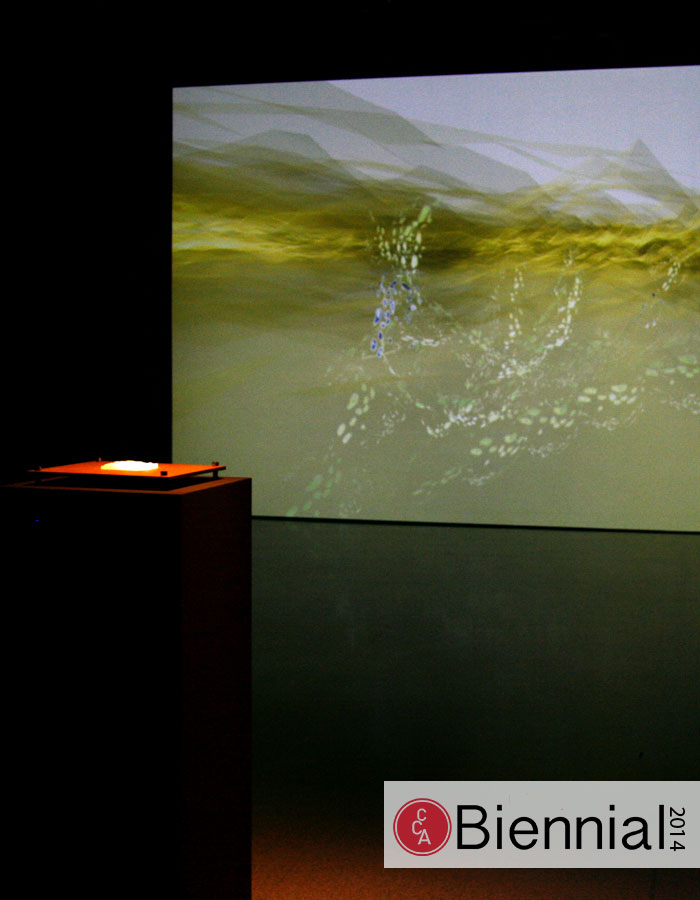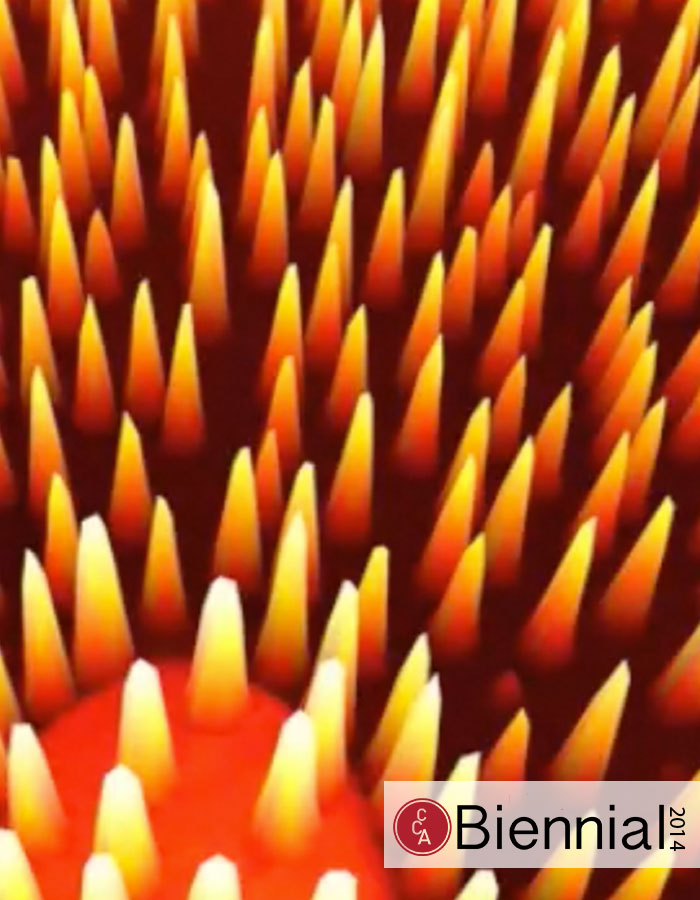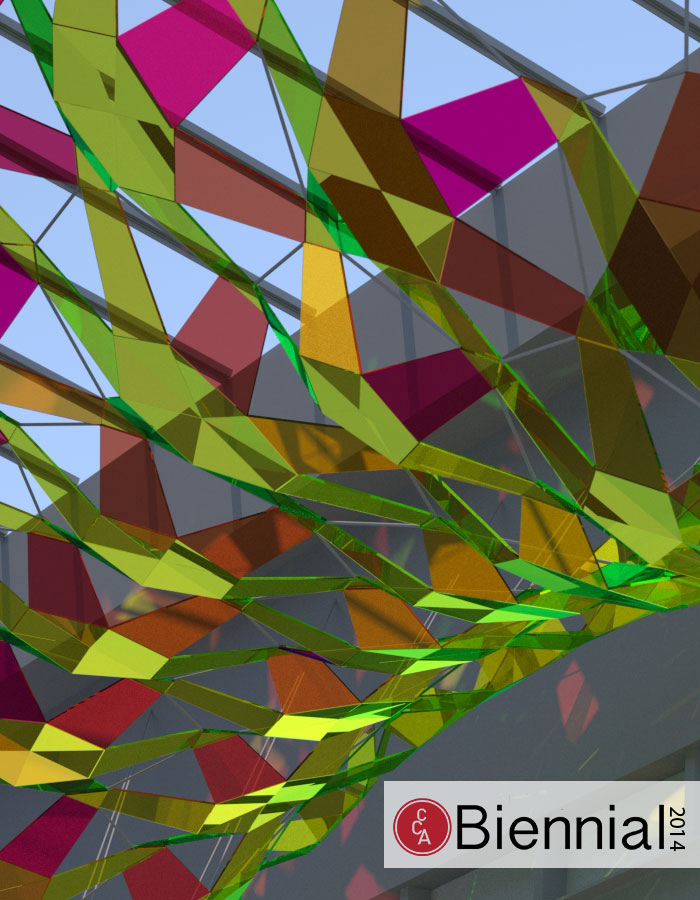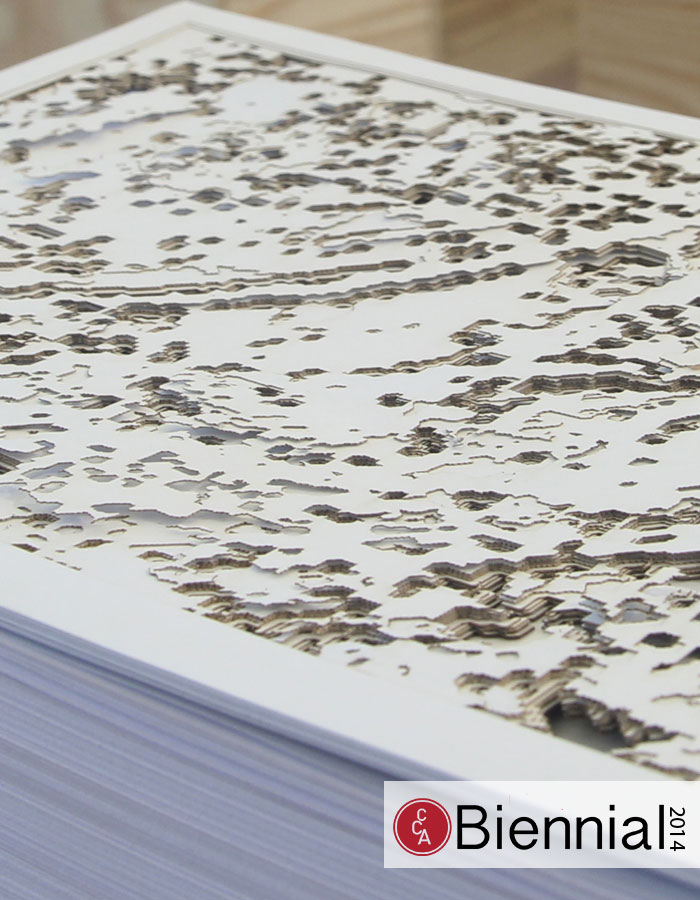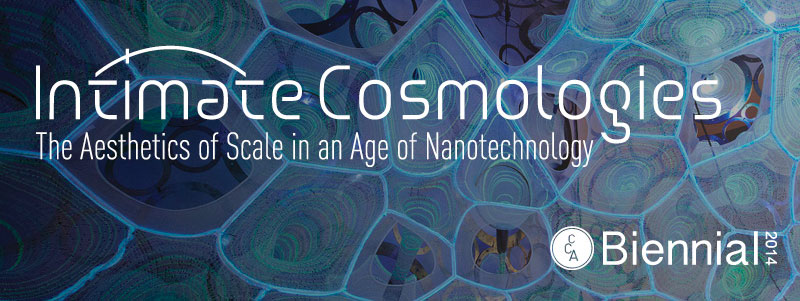
Why INTIMATE COSMOLOGIES?
The inaugural biennial theme was chosen to frame dynamic changes in 21st-century culture and art practice, and in nanoscale technology. The multidisciplinary initiative intends to engage students, faculty and the community in demonstrations of how radical shifts in scale have become commonplace, and how artists address realms of human experience lying beyond immediate sensory perception.The 2014 Cornell Biennial will explore the cultural and human consequences of seeing the world at the micro and macro levels, through nanoscience and networked communications.
A campus-wide exhibition in Fall 2014 explored the cultural and human consequences of seeing the world at the micro and macro levels, through nanoscience and networked communications.
From Sept. 15 to Dec. 22, the 2014 Cornell Council for the Arts (CCA) Biennial, “Intimate Cosmologies: The Aesthetics of Scale in an Age of Nanotechnology,” featured several events and principal projects by faculty and student investigators and guest artist-in-residence Kimsooja working in collaboration with Cornell scientists and researchers. Others artists examining the material and culture of nano science included in the exhibition are Paul Thomas and *particle group* collective with Ricardo Dominguez, Diane Ludin, Amy Sara Carroll (Cornell MFA ’95), and Nina Walsman.
The inaugural biennial theme was chosen to frame dynamic changes in 21st-century culture and art practice, and in nanoscale technology. The multidisciplinary initiative intends to engage students, faculty and the community in demonstrations of how radical shifts in scale have become commonplace, and how artists address realms of human experience lying beyond immediate sensory perception.
“The Biennial focus brings together artists and scientists who share a common curiosity regarding the position of the individual within the larger world,” CCA Director Stephanie Owens said.
“Scientists are suddenly designers creating new forms,” she said. “And artists are increasingly interested in how things are structured, down to the biological level. Both are designing and discovering new ways of synthesizing natural properties of the material world with the fabricated experiences that extend and express the impact of these properties on our lives…Today, art practice is a convergence of many disciplines – which, rather than dilute the experience of art, multiplies and opens up the ways in which artists engage the world around them. This often leads to surprising overlaps in human intention across all disciplines.”
Read more at Cornell Chronicle and Ithaca Journal.
Participating artists + groups


